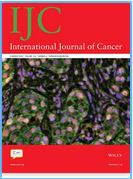Inflammatory potential of the diet and risk of colorectal cancer in the European Prospective Investigation into Cancer and Nutrition (EPIC) study
Pro‐inflammatory diets are associated with risk of developing colorectal cancer (CRC), however inconsistencies exist in subsite‐ and sex‐specific associations. The relationship between CRC and combined lifestyle‐related factors that contribute towards a low‐grade inflammatory profile has not yet been explored. We examined the association between the dietary inflammatory potential and an inflammatory profile and CRC risk…












